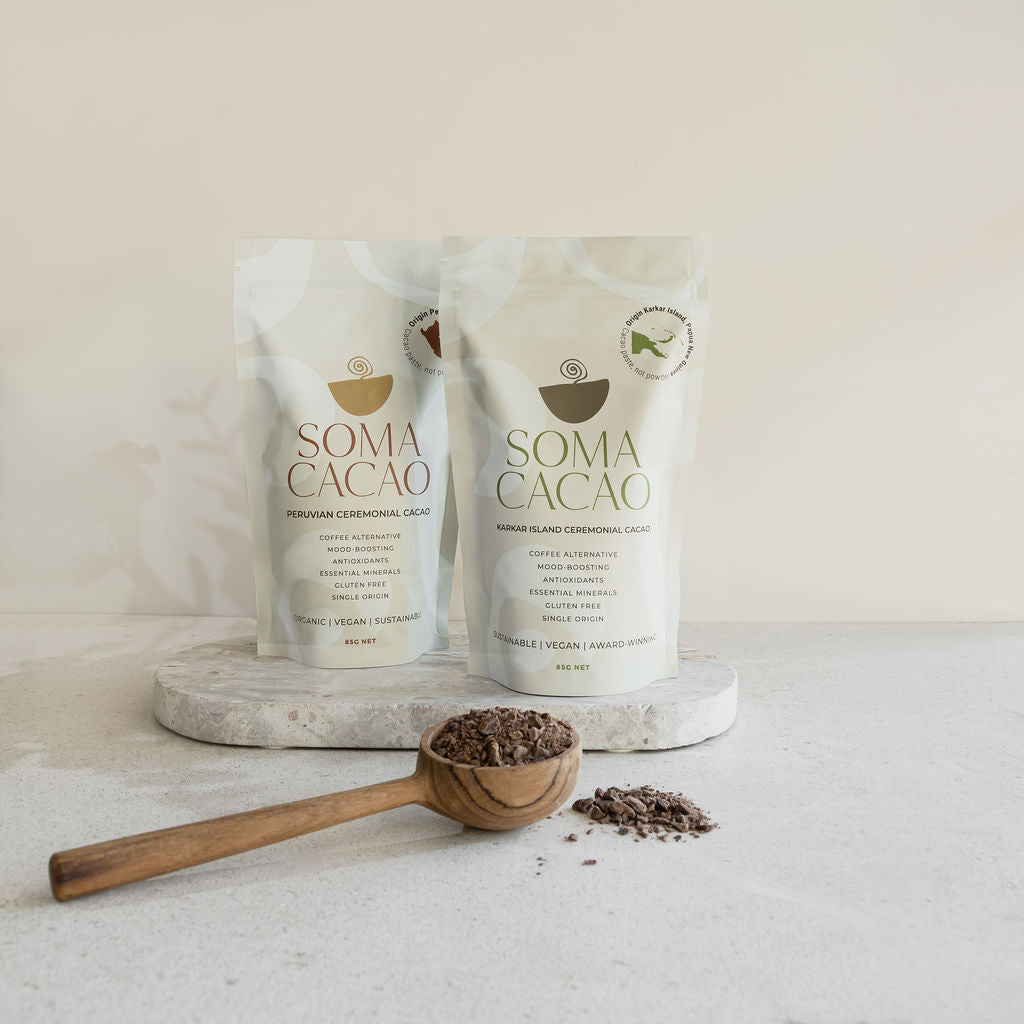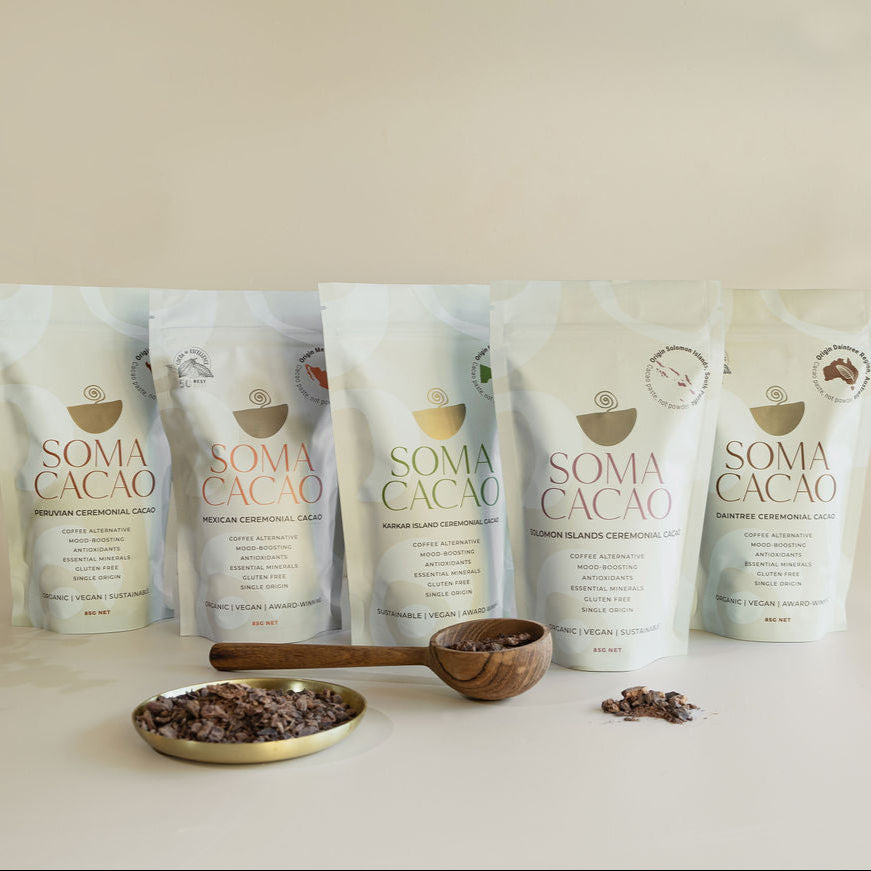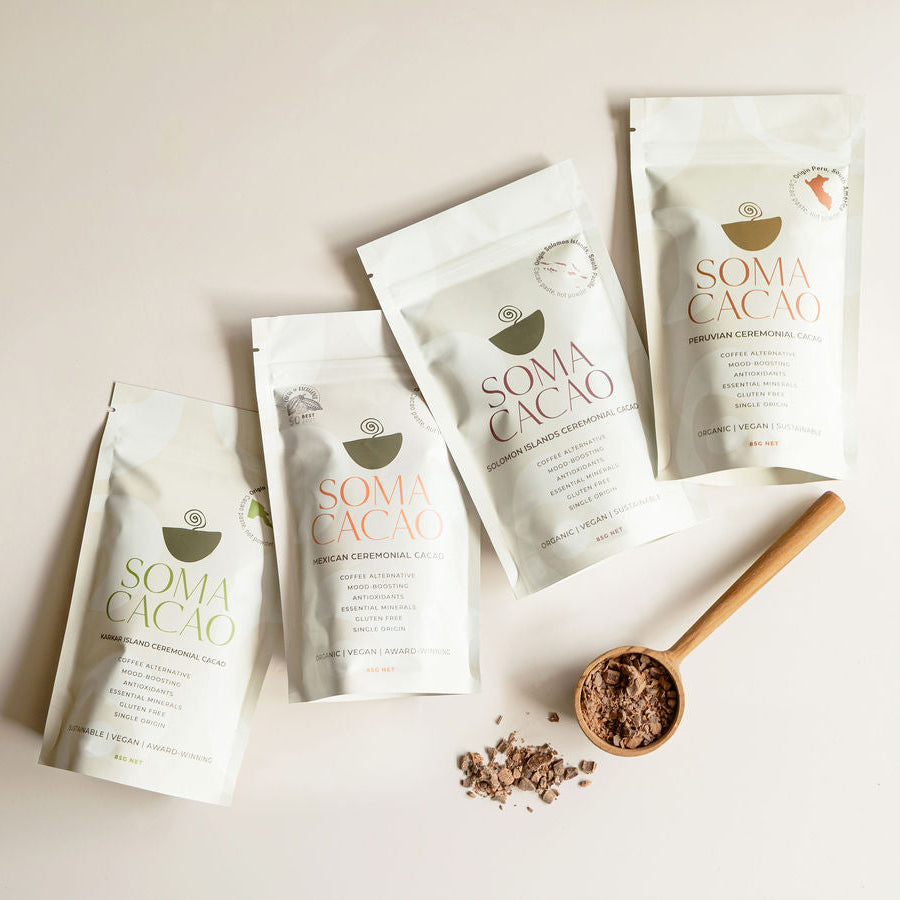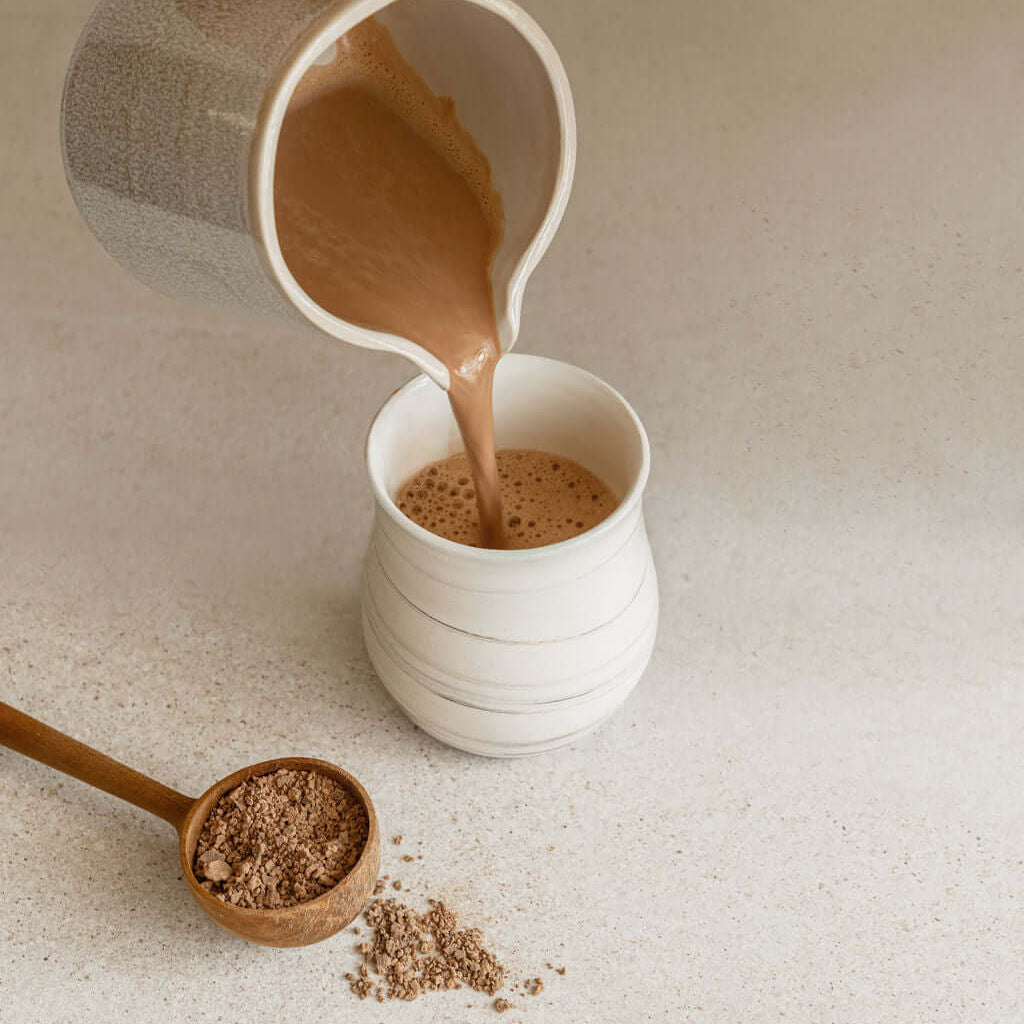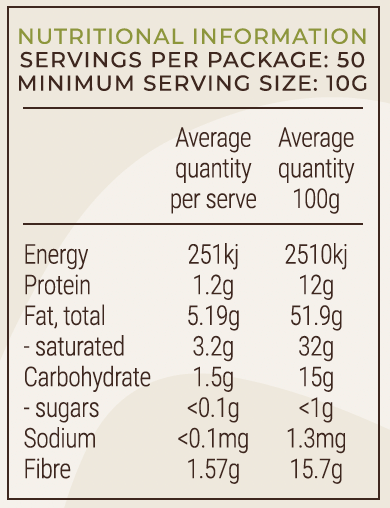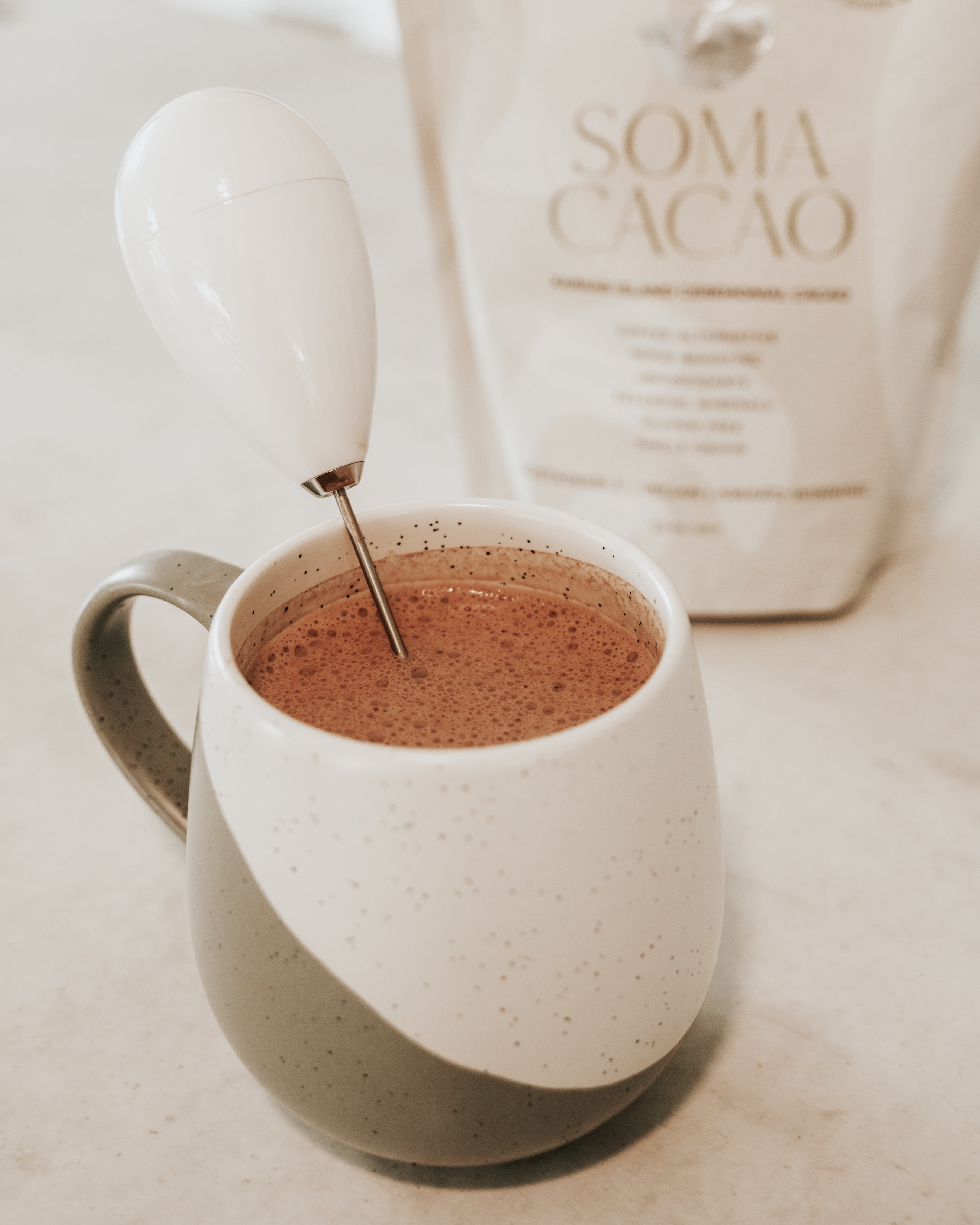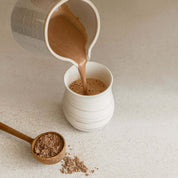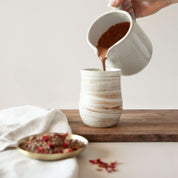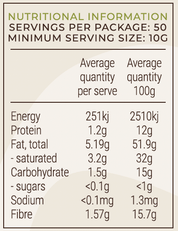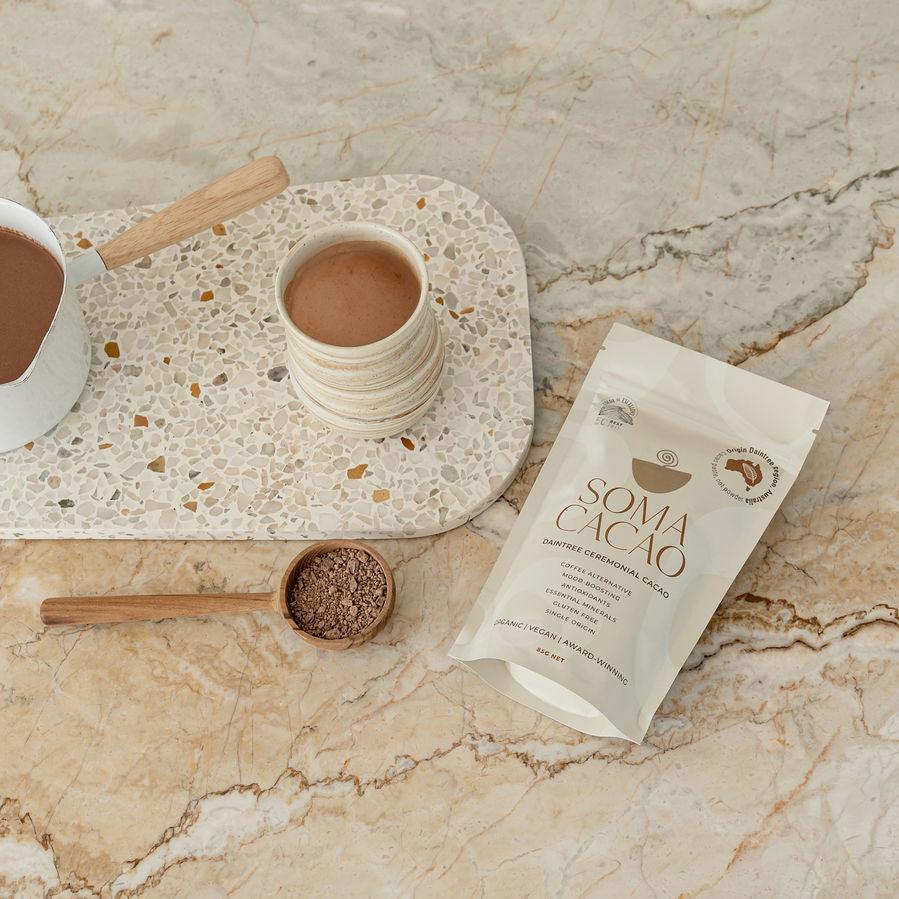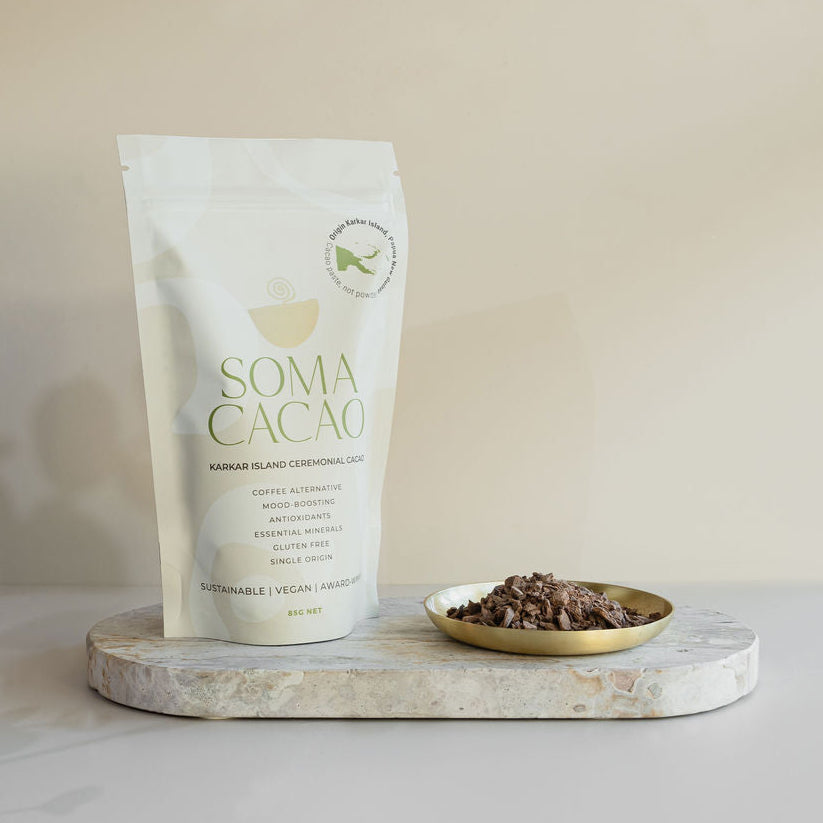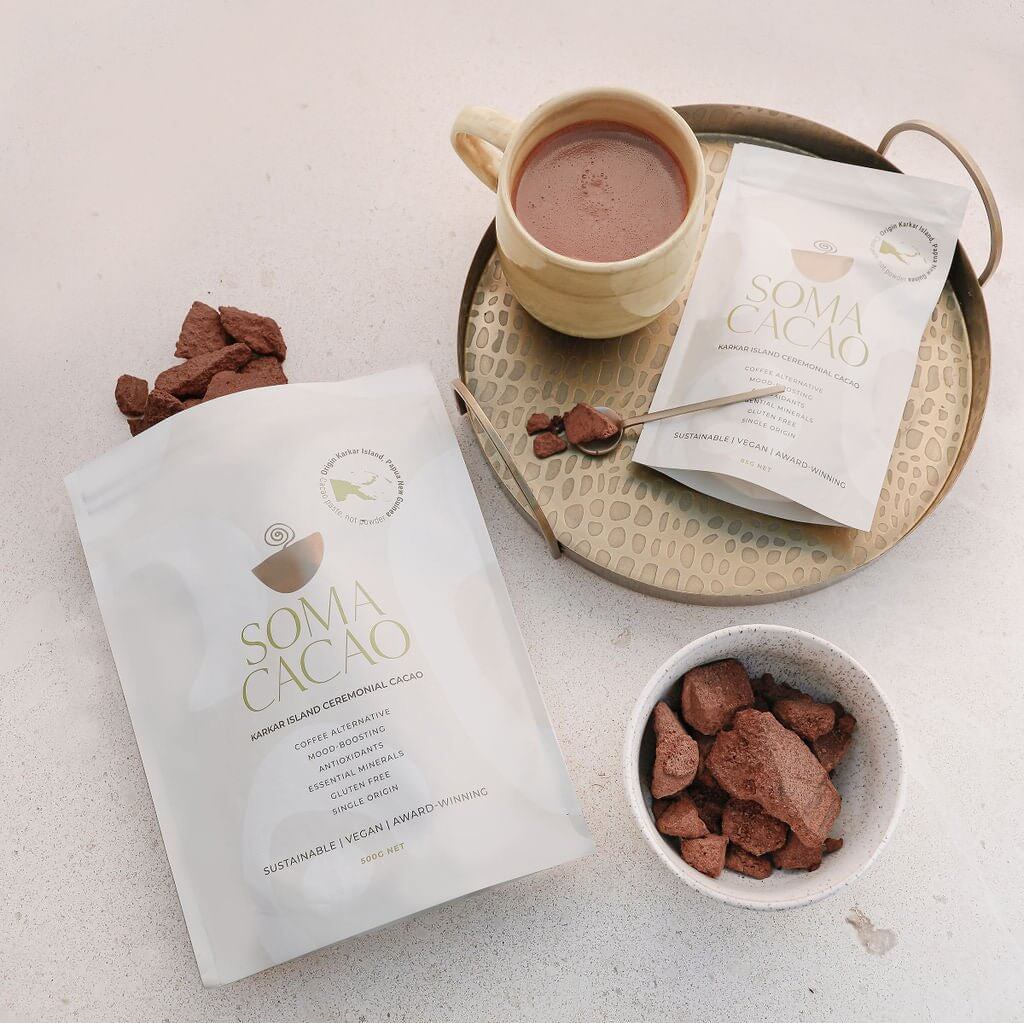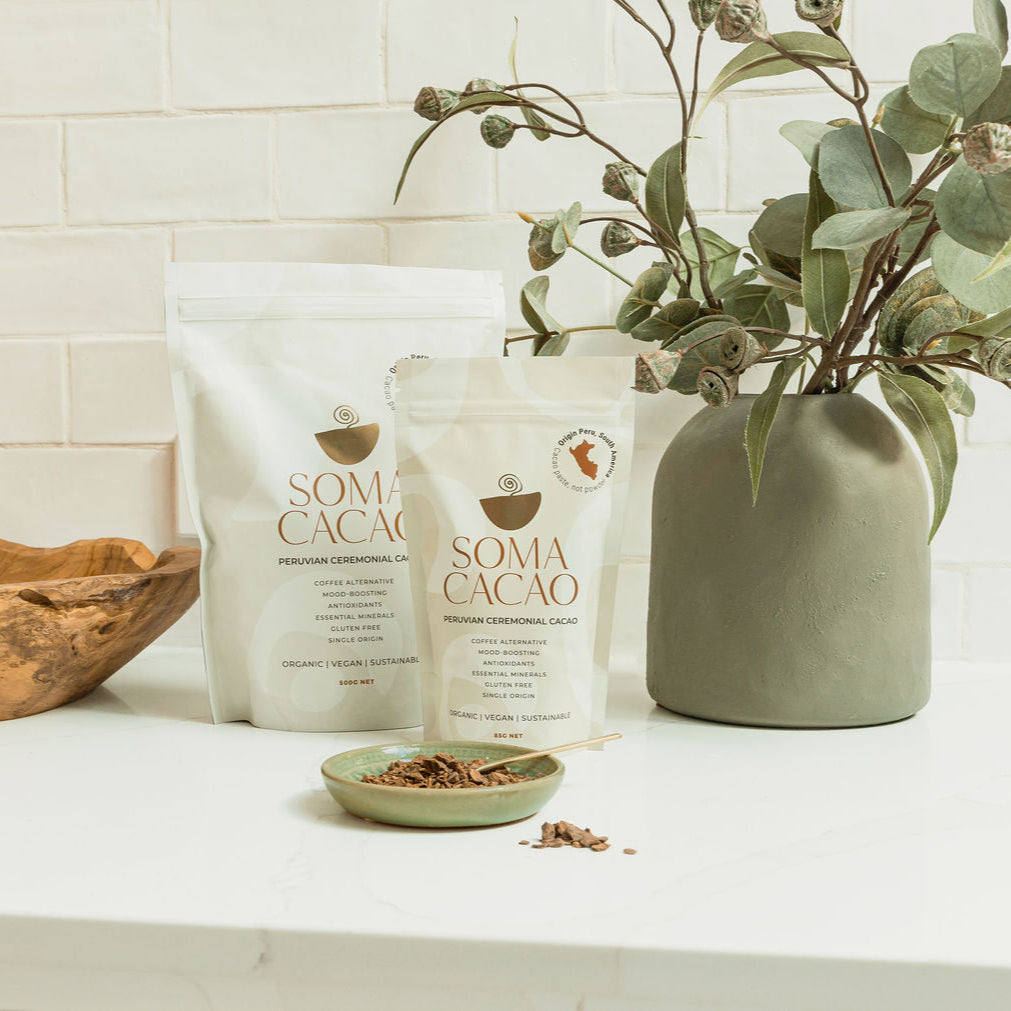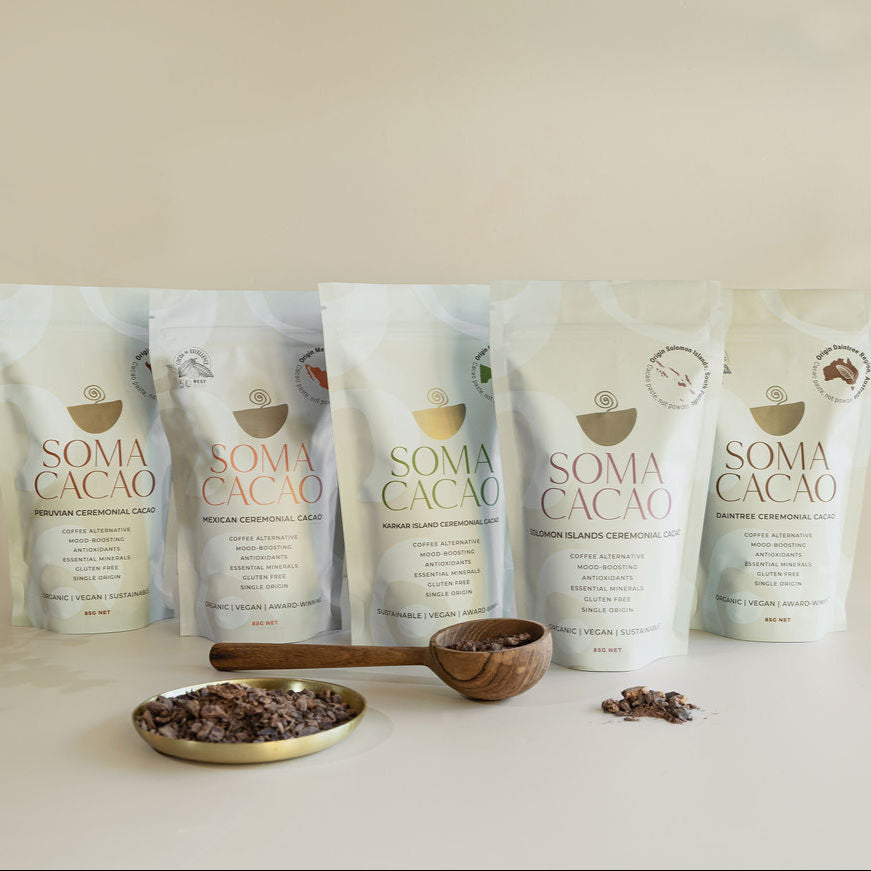Last week we saw a report called The Great British Honey Scandal, in which England’s leading honey sommelier talked about honey fraud, saying that most honey in British supermarkets is “honey-flavoured syrup,” which may well be less healthy than sugar, because you don’t know what has been added to it.
Australia is the same. We have a strong national beekeeping industry, but most honey on a supermarket shelf is either entirely imported, or mixed with imported honey. The world’s largest honey exporter is China, who have been accused repeatedly of industrial-scale honey fraud.
The honey sommelier from the report said that nothing in nature is standardised. We’re lucky to have a handful of bee-keepers at our local markets, and each batch of their honey is different. Season to season, place to place, flower to flower, bee to bee, each of their honeys tastes different with our morning cacao.
Each cacao is different, too. Even cacao of the same species grown in the same terroir (that’s a fancy French word for ‘place’) tastes different from batch to batch.
Cacao grown in the rainy season can be expected to have a fruitier, more acidic flavour, while in the dry season the sugars condense, giving dry-season cacao deeper chocolate and nutty notes.
Even cacao grown on one side of a farm can taste different to cacao grown on the other. Most cacao trees grow in the presence of other trees, which affect the nutrients available in the soil. Then you have to factor in shade, temperature, the age of the trees, and the amount of rain that falls while they’re fruiting.
Cacao is unique, because it’s not just its growing that's variable; it’s also the fermentation. Most cacao (including all of ours) is fermented at the farm it grows in. Many factors affect a fermentation, including temperature, duration, how often the cacao beans are turned, the wood the fermenting box is made of (this has a similar effect to the barrels wine is aged in), the age of that wood, and the local microbiome. A combination of yeasts, lactic acid bacteria, acetic acid bacteria, and bacilli ferment the pulp around the cacao bean. Acid and heat penetrate the bean, inducing the enzymes inside to break down the sugars and proteins. Depending on the microbes are present in fermentation (which vary from place to place and season to season), different chemical reactions happen inside the cacao bean, changing the flavour of the final cacao (bringing out more acidic notes, or buttery notes, or stronger chocolate flavours, etc).
Cacao beans are generally sun-dried (the length of drying and heat of the sun affect the flavours again), then sent away to be roasted. The length and heat of the roast affect which flavours come out in the cacao - a lighter roast retains more fruity and acidic flavours, a longer roast brings out nutty and caramelised flavours.
Cacao roasting is a showcase for Maillard reactions, which are the reactions between amino acids and reducing sugars that make roast potatoes taste so delicious. Longer roasts induce stronger Maillard Reactions, creating more buttery and malty flavours in cacao. Finally, storing cacao liquor, just like storing wine, rounds out and deepens its flavours.
As the world’s most passionate cacao sommeliers, we can tell you that no two cacaos taste the same.
Batch to batch, season to season, ferment to ferment, and roast to roast, even cacao from the same farm tastes different. We do our best at Soma to keep quality fluctuations to a minimum (we work with outstanding farmers and two of Australia’s best chocolate-makers to ensure we have world-class practices in place from tree to bag), but there will always be variations in the flavour of our cacao. That’s one way you can tell we sell premium cacao: just as premium wine changes from vintage to vintage, while crappy wine tastes just as crap each year, outstanding cacao comes from thriving, living farms, and its flavour changes to reflect its living, evolving environment.
We hope, as we explore the world of cacao with you, explain what we learn, and slowly expand our range, that each Somi becomes a cacao Somalier.
And we hope, as each new batch of our cacao arrives on your doorstep, that you simply can’t wait to tear it open, make a cup, and race out to sit on the porch, sniffing ostentatiously, smacking your lips, gargling to aerate each mouthful, moving your face about manically, saying to a loved one (or yourself) “buttery, very buttery… amaretto notes… smooth finish… long roast, medium heat… certainly a South American terroir… rich caramelisation… dairy cream mouthfeel… yes, very nice; very nice, Winston. Oh, Winston, this is delicious cacao indeed!”
With local honey and a little rock salt,
Rose, Alistair, Winston and the team at Soma Cacao Australia.


